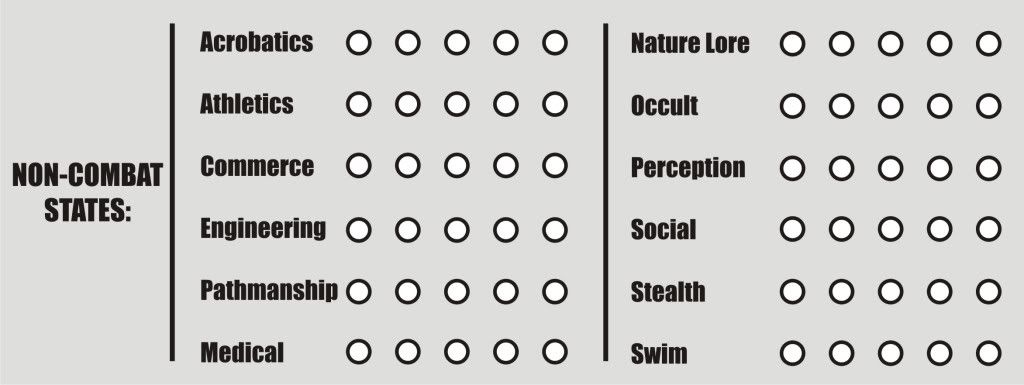Hi everyone! The name’s Julian.
I feel happy to be apart of the “experimental playground” crew & guess I’ll share abit on some game mechanics that I’ve been thinking about lately. But 1st, alil sharing about my love for RPG games. :)
My 1st experience playing an RPG was from my high school years when I accidently pulled out a Fighting Fantasy book by Ian Livingstone & Steve Jackson. It was there & then that I founded my inspiration to dwell more into the realm of fantasies.

My love for these “game books” brought me later to the Lone Wolf Saga & Grey Star. Later on, I switched school & got hooked up with some friends that taught me how to play Dungeons & Dragons My 1st ever pen-&-paper RPG.

Like most RPG enthusiast, I wanted to create my own game. At 1st I wanted to create a game system for a role-playing game, very much like Dungeons & Dragons, but wanted something simpler. In my later days I was introduced to White Wolf’s D10 system & also the Warhammer Fantasy combat system. I was generally impressed with the two & this is what I came up with:
(I haven’t really come up with a name for this system, so for now I’ll just call it JEP1; as in “Julian’s experimental 1”.)
The game sheet looks like this:

We will go on the other details of the game as we slowly progress, today I'll only point out the "combat related states" & the "non-combat related" states.
********************
Combat States (CS):

Melee (M): This is the score used to attack & defend against “melee only” attacks (unless another skill specifies an extended use). The score here also symbolizes the number of “melee attacks” a character has, determining how many dice the character may use in a round.
Range (R): This score is used to hit to a target with a range attack. The score here also symbolizes the number of “range attacks” a character has, determining how many dice the character may use in a round.
Strength (S): This state is used to determine the character’s strength & his ability to lift objects, push, carry things & also if his melee strength is strong enough to penetrate an opponent’s toughness,
Toughness (T): This state applies to the constitution & stamina of the character. It also acts as the 1st “buffer” against an opponent’s strength attack.
Initiative (I): This state symbolizes the character’s reaction in combat. It is used to determine which character goes 1st in combat & also is used to avoid Range attacks.
Health (H): This score represent the amount of damage the character can take.
Armor (A): This state here represents the armor protection of the character. It also acts as the 2nd & last buffer to an enemy’s strength attack.
NON-Combat States (NCS):

These states here are used for role-playing purposes (unless stated otherwise by a new skill). They are divided in to a few categories:
Acrobatics: The character’s ability to do high jumps, balance & landings.
Athletics: The character’s knack in dashing, long jumps & maintaining his stamina for long distance running.
Commerce: The character’s ability to haggle, barter, appraise value, knowledge of market trends , demand, currency values & entrepreneurship.
Engineering: The character’s knowledge & ability to operate machines, piloting, driving, read blueprints, hacking & understanding how a mechanism works.
Pathmanship: The character’s ability to navigate, always know where north is, understanding the terrain, wind conditions, weather & sensitive to his surrounding.
Medical: The character’s knowledge of how the body works, heal & how to perform 1st aid or even surgery.
Nature Lore: Knowledge of animals, monsters & plants, ability to tame & the character’s knowledge of natural medicine from both flora & fauna.
Occult: The character’s knowledge in the realm of the occult, forgotten languages, culture & ability to operate certain ancient artifacts.
Perception: The character’s sensibility of vision, touch, smell & hearing.
Social: The character’s charm, bluff, charisma, connections (casual, political or underworld) & ability to read innuendos.
Stealth: The character’s ability to hide, move silently & avoid leaving traces.
Swim: The character’s ability to swim, dive & maintain his breath.
********************
So that’s the general Idea of the states, till next time I will explain how to use the combat system & also the purchase point system at a different time.
For now, this is Julian signing out! :D













